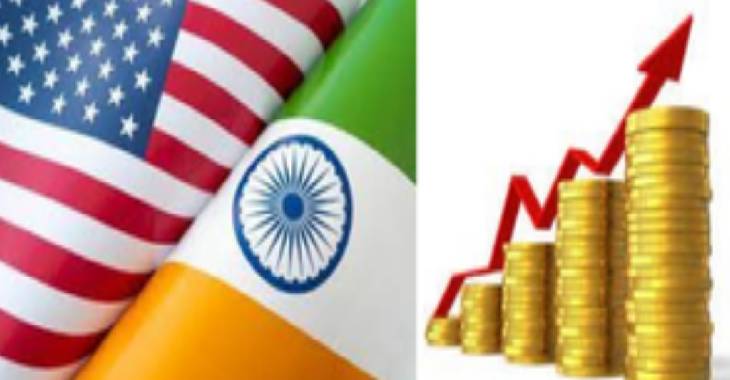According to a special SBI Research report released on Monday, US trade tariff reciprocity may end up being more of a waste of time, and bilateral negotiations generally benefit India by creating an atmosphere that is favourable for cooperative dynamism in the areas of defence, energy security, innovations, technology, critical minerals, maritime security, investments, and higher education.
According to the State Bank of India’s Economic Research Department report, “Collateral benefits: IND-US trade set to transcend new boundaries,” the largest and most dynamic democracy in the Indian Ocean is a natural ally of the United States “from a strategic, as well as economical perspective.”
According to the SBI research, “our estimates show overall incremental tariff levels even at 15%-20% imposed by USA would still limit the impact on exports to US only in the range of 3-3.5%, which again should be negated through higher export goals.”
It underlined that India has expanded its export base, added value, looked into other markets, and is developing new pathways that connect Europe and the United States through the Middle East. It has also redesigned supply chain algorithms that promote strategic inclusion.
Over time, both the US and India have modified their tariff systems to reflect changing economic goals and trade policies.
India’s tariff revisions seem more dynamic, even if US duties on Indian exports have stayed mostly unchanged.
Before dipping marginally to 3.83 percent in 2022, the US tariff rate on Indian imports rose from 2.72 percent in 2018 to 3.91 percent in 2021. According to the analysis, India’s tariffs on US imports increased from 11.59 percent in 2018 to 15.30 percent in 2022.
With 17.7% of all exports in FY24 going to the US, the US is India’s biggest export destination.
We have also calculated the probable decline in Indian exports in the event that the United States levies a 15% retaliatory tax on India, which is three times the current total. According to the SBI analysis, this aids in understanding how sensitive exports are to changes in tariffs.
A new ten-year “Framework for the US-India Major Defence Partnership in the 21st Century” is scheduled to be signed this year by both countries. By 2030, both nations hope to have more than doubled their bilateral commerce to $500 billion.
Read More
Sensex and Nifty recover to break an eight-day losing trend


